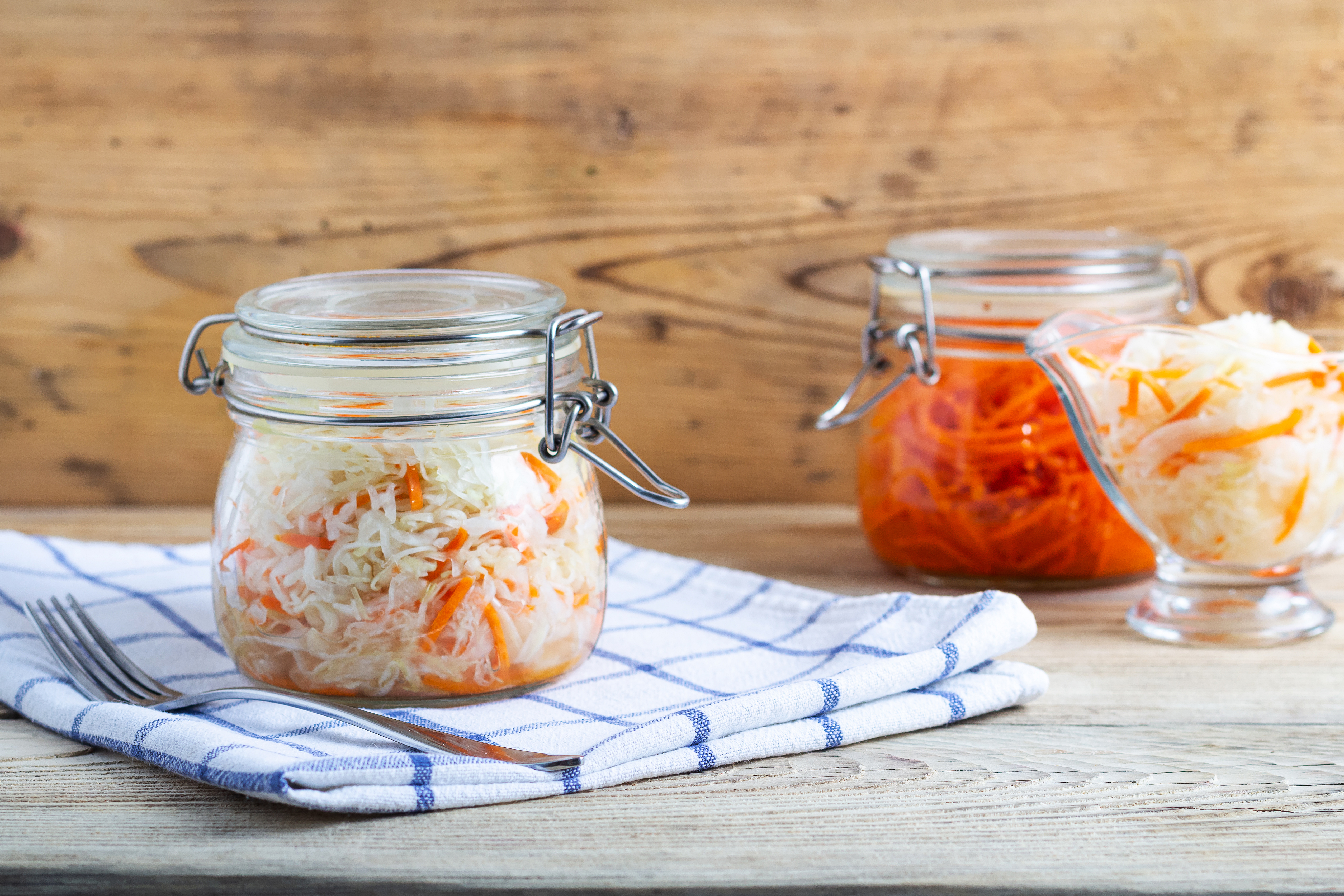
This recipe is very forgiving. As long as you use 50% cabbage, you can mix and match other vegetables that have been sliced, diced and chopped. If you have never made kraut, try just or mostly cabbage first as it’s the most successful fermenter. This is a beginner method that involves no special equipment.
Ingredients
Additional Notes
Add if desired any combination of:
- 1 carrot, sliced or julienned
- 1 stalk celery, sliced on the diagonal
- 1 daikon radish, sliced or julienned
- 1 beet, sliced or julienned
Optional Flavor additions:
- 2 inches of ginger, blenderized with ¼ cup water
- 1 bunch coarsely chopped fresh dill
- 2 TBS caraway or fennel seeds
- 1 – 4 TBS hot pepper such as Aleppo or gochutgaru (for kimchi style)
Instructions
Remove the outer leaves of the cabbage and discard. Do not wash the insides; the organisms in the folds of the cabbage start the fermenting process. Chop or Shred.
Place one shredded cabbage and 1 TBS salt in a large bowl and massage, punch, squeeze and otherwise manipulate it until you can squeeze a handful and juices drip out of it. If it just doesn’t give up juices, add a few TBS of water and another ½ tsp of salt, no more. Too much salt inhibits fermentation. If you don’t want to add salt, cover it and wait an hour and let the salt pull juices out.
Toss the cabbage with the remaining vegetables and your choice of optional additions, making sure it is at least half cabbage.
Taste. Getting the amount of salt right becomes something you can taste at this stage. It should be pleasantly salty, not overwhelmingly salty, like a not too salty potato chip.
Pack the mix into wide mouth one-quart Ball jars. Press each addition until it is compacted, no air pockets allowed. Be sure fluid is covering the vegetables lest it mold. If it didn’t yield enough brine, you can make a brine of 1 cup boiling water to 1 tsp salt; cool completely and use some to top off the jar. Leave an inch of head room. This prevents molding and flowing over.
Set the jar on a plate and leave it in a warm place in the room, like on top of the fridge. Do Not screw down the lid, it needs to burp and you will be visiting it each day. In warm weather, the counter is fine.
Each day, take a fork and press down the vegetables to submerge them. By day 2 or 3 it will foam when you press. It may smell odd for a day or two. That’s correct. By day 4, 5 or 6, the foaming dies down. It is ready to have the lid screwed on and sit in the fridge for a couple days more before the taste is nice and sour. Remember, it takes longer in winter than in summer.
Interpretations and Troubleshooting
Icky, limp kraut: Probably you didn’t pack it hard enough and air bubbles allowed the wrong organisms to grow. This is compost and a lesson: Pack the kraut into the jar, really press each handful as it goes in.
It may not taste so nice when it’s done bubbling (about day 5 - 8): Leave it in the fridge and the flavor improves as it matures. Taste again.
Mold forms: Maybe you didn't
- press them in enough or keep the vegetables submerged. Once or twice a day, press those veggies down so there is always fluid on top. Most cabbages give up the right amount of fluid. But if you got a dry one, you can add a little brine to the top, ½ tsp salt to ½ cup water.
- put in enough salt. Lactobacilli love salt (“halophilic” organisms). As they thrive in your brine, they suppress the other organisms.
Cautionary Note
Fermented foods are not for everyone. If you have reactions to fermented foods like cheese and vinegar, this may not be right for you. Test a small amount. If you don’t feel good on it, you may need an interim step of gut healing with pre-biotic foods and bone broth prior to eating kraut and kimchi. A medical nutritionist can help with this.
